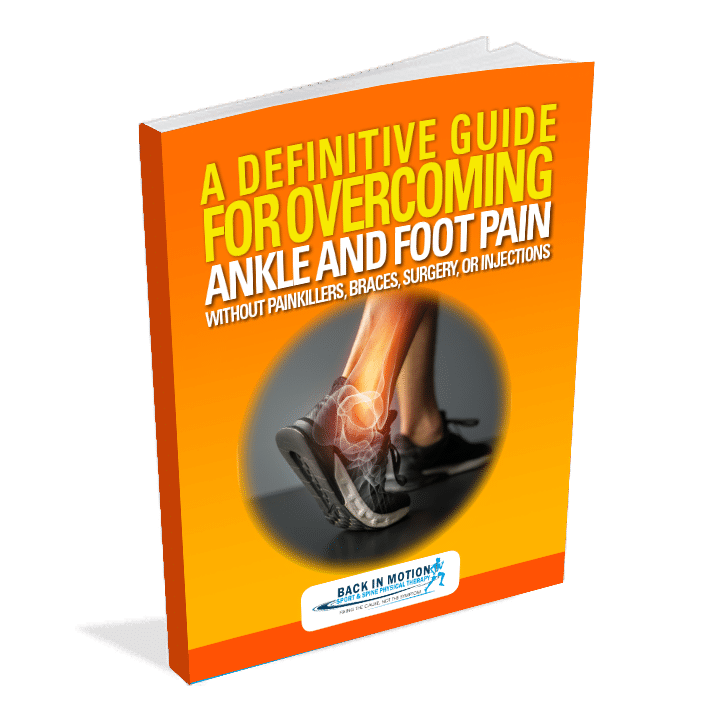Severe Ankle Sprain
Ankle Sprains are one most common sports injuries that can happen to anyone. The ankles support the body’s entire weight, hence are vulnerable to instability.
Walking on a rough surface or wearing the wrong sized shoes causes a sudden loss of balance which makes the ankle twist.
The extremity of the turn the ankle takes causes the sprain. The far enough twisting tears the muscle fibers and ligaments responsible for holding the bones together resulting in a sprain.
How Do I Know If I Have a Severe Ankle Sprain?
Fancy bandages and couch surfing the internet might not contribute enough for treating the severe ankle sprain. It might not be common, but in some cases, doctors do recommend reconstruction surgery for ankle sprains.
What Exactly Has Happened to the Ankle?
When an ankle gets sprained, the ankle bone is uninjured because It is the ligaments around the ankle bone that suffer.
There are two different types of an ankle sprain.
- The inversion ankle sprain- It occurs when the footfalls inward and stretches the outer ligaments beyond its motion range. Pain is mostly outside of the ankle and not on the inside of the ankle.
- The eversion ankle sprain – It occurs when the foot is twisted outwards and the inner ligament is stretched beyond their motion range. Pain mostly occurs on the inside, and not the outside, of the ankle.
- The High ankle/Syndesmosis- It occurs when the ankle is excessively rotated with a jerk like movements. The extreme ankle dorsiflexion causes the breakage of ligaments connecting bone tibia and fibula. These sprains are serious and often are caused while playing contact sports games like soccer, basketball, volleyball, roller derby, and more.
It is hence valuable to have a good understanding of the mechanics of the ankle and the location of all these different tendons & ligaments.
Recognizing the cause of different types of ankle sprain injuries can help pinpoint the exact type of ligaments involved which allows our Fort Myers Physical Therapists to direct treatments most appropriately.
The severity of Ankle sprain
Before haunting you with the heavy names, let us know more about how exactly severe ankle sprains are differentiated from mild ones.
Three medical terms are discussing the severity of ankle sprains are:
Grade I – Mild sprains with ligaments stretched but not torn. Patient experiences pain & stiffness
Grade II- Moderate sprains where ligaments are partially torn making the joint a little less stable. Patients experience pain along with swelling.
Grade III- Severe Sprains when one of the ligaments is completely torn making the ankle unstable. Patients experience tremendous pain with episodes of immobility
Things to keep in Mind
- In severe cases, the pain, swelling, and bruising of the affected limb give a good indication that this might be a grade III ankle sprain.
- The RICE principles could help but might not be enough.
- You may hear a pop sound right after the fall or twist.
- Initially, patients may visit an emergency room and have x-rays and MRI testing is done.
- Playing it tough and not a consulting doctor may lead to an increased risk of re-injuring the severe ankle sprain.
Want to See How We Can Help You?
Claim A Free 20 Minute Discovery Visit….
Severe Ankle Sprain Treatment
In grade III severe cases, it usually takes months for regaining full functional strength. P.RI.C.E principles have to be followed within 48 hours. Physiotherapy, ROM exercises, and strengthening exercises are recommended for the first three to five months.
In some cases, Arthroscopy and Reconstruction surgery is advised. In Arthroscopy, the procedure is invasive using an arthroscope. Reconstruction surgery is also another alternative surgery suggested by surgeons in which torn ligaments are repaired with stitches.
Those patients who do not wish to undergo a ligament repair usually follows the prolonged periods of inactivity, frequent ice packs, and the use of anti-inflammatory medications and physical therapy.
Our Fort Myers physical therapy helps such patients who do not prefer surgery. The team of professionals at Back In Motion finds the root cause of the injury to design Physical therapies to completely cure the injury without the need for any surgical procedure.
Deep friction techniques are applied to treat an ankle sprain because it helps to reduce fibrous scar tissue which adheres to the healing ligament. Friction massage also aids in fibroblast proliferation to help repair damaged tissue.
Physiotherapy treatments help restore normal movement in the ankle. Dr. Scott Gray might advise patients’ to begin with passive motions performs to gently move the ankle and foot, and he progresses to active exercises and stretches that one can do himself.
Call our office at 239-223-0484 and schedule your appointment today!

GET YOUR FREE REPORT
A Definitive Guide for Overcoming Ankle and Foot Pain
About Author: Dr. Scott Gray
Dr. Scott Gray is an internationally recognized and expert physical therapist specializing in sport, athletic, and back and neck injuries. He is the inventor of a revolutionary form of treatment called the GRAY METHOD. This type of treatment unlike others, addresses the CAUSE rather than just your SYMPTOMS with a full body approach. For more information on how to ease or overcome your injury, go to www.backinmotionsspt.com.





